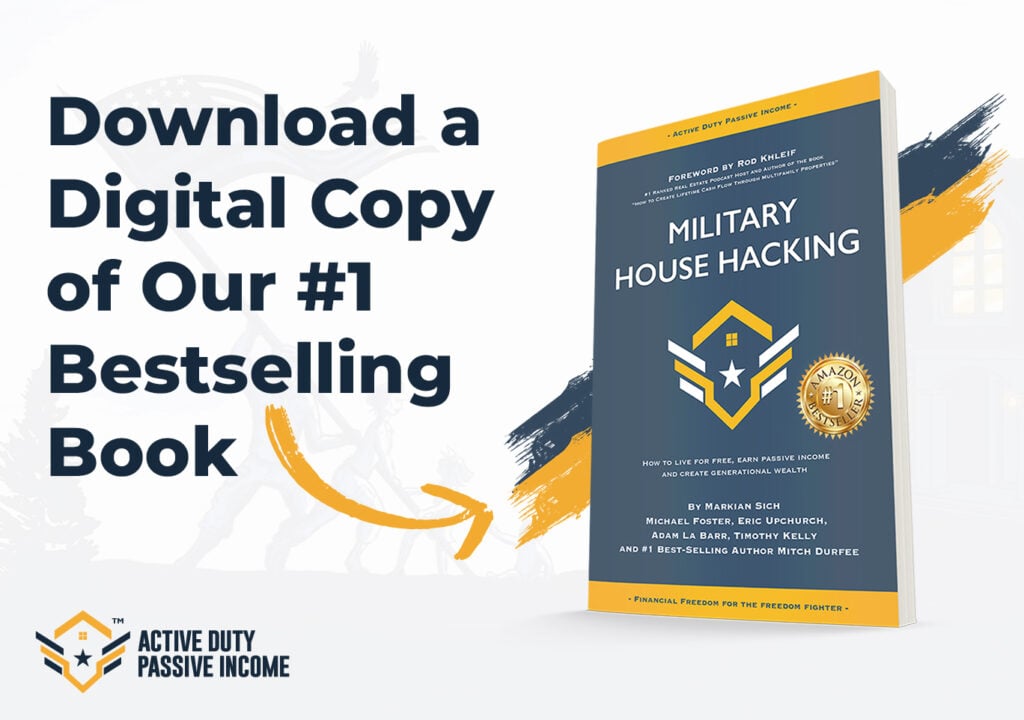Transform your dream home into reality with the streamlined power of one-time close construction loans!
Building your dream home can be an exciting but complex journey, particularly when it comes to financing. One-time close construction loans, also known as single-close or all-in-one construction loans, offer a streamlined solution for those looking to finance the construction of their new home. This comprehensive guide will explore everything you need to know about one-time close construction loans, including their benefits, how they work, and what you need to qualify.
What is a One-Time Close Construction Loan?
A one-time close construction loan is a type of financing that combines a construction loan and a permanent mortgage into one single loan. This eliminates the need for two separate closings, reducing paperwork, fees, and the complexity of the loan process. Once the construction phase is complete, the loan automatically converts into a permanent mortgage.
Key Features of One-Time Close Construction Loans
- Single Closing: One-time close construction loans require only one closing, which occurs before construction begins.
- Fixed Interest Rates: These loans often come with fixed interest rates, providing predictability for borrowers.
- Simplified Process: Combining the construction and permanent financing into one loan simplifies the overall process.
- Interest-Only Payments: During the construction phase, borrowers typically make interest-only payments.
Benefits of One-Time Close Construction Loans
One-time close construction loans offer several benefits that make them an attractive option for financing the construction of a new home.
Streamlined Process
The most significant advantage of a one-time close construction loan is the streamlined process. Since there is only one closing, you save time and money by avoiding the need for a second closing. This can also reduce the stress and complexity typically associated with the construction and mortgage process.
Cost Savings
By combining the construction and permanent loan into one, you can save on closing costs and other fees associated with securing two separate loans. Additionally, you only pay for one set of loan origination fees, title insurance, and appraisal fees.
Interest Rate Protection
One-time close construction loans often come with fixed interest rates, which can protect you from interest rate fluctuations during the construction period. This means you lock in your interest rate at the beginning of the process, providing financial predictability and stability.
Convenience
Managing one loan instead of two can simplify your finances. You only need to work with one lender, make one monthly payment, and handle one set of paperwork, making the entire process more convenient.
How One-Time Close Construction Loans Work
Understanding how one-time close construction loans work is crucial to determining if this type of financing is right for you.
The Loan Approval Process
The approval process for a one-time close construction loan is similar to that of a traditional mortgage. Here are the main steps involved:
- Pre-Approval: Before you begin construction, you’ll need to get pre-approved for a one-time close construction loan. This involves submitting your financial information to the lender, including income, assets, and credit history.
- Loan Application: Once pre-approved, you’ll complete a loan application. This is where you’ll provide detailed information about your construction project, including plans, specifications, and cost estimates.
- Appraisal: The lender will order an appraisal to determine the projected value of your completed home based on the construction plans and specifications.
- Approval: If the appraisal and all other documentation meet the lender’s requirements, your loan will be approved. You’ll then proceed to the closing.
The Construction Phase
After the loan closes, the construction phase begins. Here’s what to expect during this period:
- Disbursement of Funds: The lender will disburse funds to your builder in stages, also known as draws, as construction progresses. Each draw typically requires an inspection to ensure that the work has been completed satisfactorily.
- Interest-Only Payments: During the construction phase, you’ll make interest-only payments based on the amount disbursed to date. This can help keep your payments lower while your home is being built.
- Builder Requirements: It’s important to work with a reputable builder who is approved by your lender. The lender may have specific requirements for builders to ensure the quality and completion of the project.
The Conversion to a Permanent Loan
Once construction is complete, the loan will automatically convert to a permanent mortgage. Here’s how this phase works:
- Final Inspection: The lender will conduct a final inspection to ensure that the home has been completed according to the plans and specifications.
- Conversion: After the final inspection and any necessary documentation, the loan converts to a permanent mortgage. This typically involves converting the interest-only payments to regular principal and interest payments.
- Permanent Mortgage Terms: The terms of the permanent mortgage, including the interest rate, loan term, and monthly payment, were established during the initial loan approval process.
Qualification Requirements for One-Time Close Construction Loans
Qualifying for a one-time close construction loan involves meeting certain criteria set by lenders. Here are the main requirements:
Credit Score
Lenders typically require a minimum credit score to qualify for a one-time close construction loan. While requirements vary by lender, a score of at least 620-680 is commonly needed. Higher credit scores may result in better loan terms and interest rates.
Income and Employment
Stable income and employment are crucial for qualifying for a one-time close construction loan. Lenders will review your income, employment history, and debt-to-income (DTI) ratio to ensure you can afford the loan payments. A DTI ratio of 43% or lower is generally preferred.
Down Payment
One-time close construction loans usually require a down payment. The amount can vary but typically ranges from 5% to 20% of the loan amount. Some government-backed loans, such as VA or FHA construction loans, may offer lower down payment options.
Builder Approval
Your chosen builder must be approved by the lender. This ensures that the builder is reputable and capable of completing the construction project. The lender may review the builder’s financial stability, experience, and references.
Construction Plans and Specifications
You’ll need to provide detailed construction plans and specifications, including cost estimates, to the lender. This information helps the lender assess the project’s feasibility and determine the loan amount.
Types of One-Time Close Construction Loans
There are several types of one-time close construction loans available, each with its own features and benefits.
Conventional Construction Loans
Conventional one-time close construction loans are offered by private lenders and typically require higher credit scores and down payments. These loans offer flexible terms and competitive interest rates for qualified borrowers.
FHA One-Time Close Construction Loans
The Federal Housing Administration (FHA) offers one-time close construction loans with lower down payment requirements and more lenient credit score criteria. FHA loans are a popular option for first-time homebuyers and those with less-than-perfect credit.
VA One-Time Close Construction Loans
The Department of Veterans Affairs (VA) provides one-time close construction loans for eligible veterans, active-duty service members, and surviving spouses. VA loans offer benefits such as no down payment, competitive interest rates, and no private mortgage insurance (PMI).
USDA One-Time Close Construction Loans
The United States Department of Agriculture (USDA) offers one-time close construction loans for eligible rural homebuyers. These loans provide benefits such as no down payment and low-interest rates, making them an attractive option for those looking to build in rural areas.
Choosing the Right Lender
Selecting the right lender for your one-time close construction loan is crucial to a successful homebuilding experience. Here are some tips for choosing the right lender:
Research and Compare
Research different lenders and compare their loan offerings, interest rates, and fees. Look for lenders who specialize in construction loans and have experience with one-time close construction loans.
Check Reviews and References
Check online reviews and ask for references from previous customers to gauge the lender’s reputation and customer service. Positive reviews and satisfied customers are indicators of a reliable lender.
Ask About Builder Requirements
Ensure that the lender’s builder requirements align with your chosen builder. Some lenders have specific criteria for builders, and it’s important to verify that your builder meets these requirements.
Understand the Process
Ask the lender about their loan approval and disbursement process. Understanding the timeline and requirements can help you prepare and avoid delays during the construction phase.
Common Challenges and How to Overcome Them
While one-time close construction loans offer many benefits, there can be challenges during the process. Here are some common challenges and how to overcome them:
Construction Delays
Delays in construction can occur due to weather, supply chain issues, or other unforeseen circumstances. To mitigate delays:
- Work with a Reputable Builder: Choose a builder with a proven track record of completing projects on time.
- Regular Communication: Maintain open communication with your builder to stay informed about the progress and any potential delays.
- Buffer Time: Include buffer time in your construction schedule to account for potential delays.
Cost Overruns
Cost overruns can occur if the construction project exceeds the initial budget. To avoid cost overruns:
- Detailed Budget: Create a detailed budget with your builder and include contingency funds for unexpected expenses.
- Fixed-Price Contract: Consider a fixed-price contract with your builder to lock in costs and minimize the risk of overruns.
- Regular Monitoring: Regularly review the budget and expenses with your builder to ensure the project stays on track financially.
Builder Approval Issues
If your builder does not meet the lender’s requirements, it can delay the loan approval process. To address builder approval issues:
- Early Verification: Verify your builder’s credentials and financial stability early in the process to ensure they meet the lender’s requirements.
- Alternative Builders: Have a list of alternative builders who are approved by the lender, in case your initial choice does not meet the criteria.
One-time close construction loans offer a streamlined and efficient way to finance the construction of your dream home by combining construction and permanent financing into a single loan. This approach simplifies the process, reduces costs, and provides financial predictability by locking in interest rates from the start.
Understanding the key features, benefits, and qualification requirements of one-time close construction loans can help you determine if this financing option is right for you. By choosing the right type of loan—whether it’s conventional, FHA, VA, or USDA—and working with a reputable lender and builder, you can navigate potential challenges and ensure a successful construction project.









